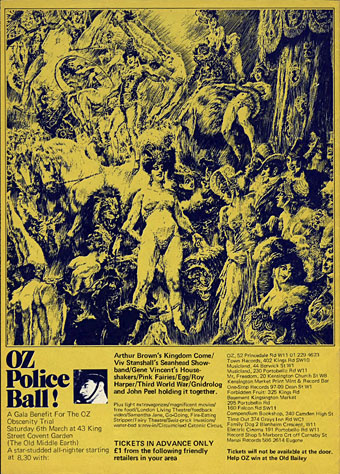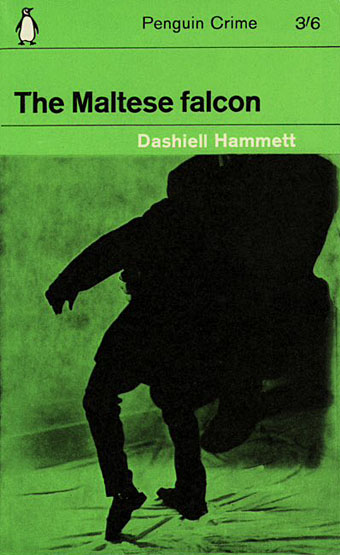The back cover of Oz 33, February 1971. Art by Norman Lindsay.
• Walker Mimms looks back 50 years to the trial of the editors/publishers of Oz magazine, in which the trio were accused of “conspiracy to corrupt public morals” following the appearance of Oz 28, the “Schoolkids Issue”, in May 1970. Elsewhere: corrupt your own morals by reading the offending issue; then see Hugh Grant in a hippie wig in The Trials of Oz, a BBC dramatisation of the courtroom drama; after which you can watch the real editors—Richard Neville, Jim Anderson and Felix Dennis—discuss the whole affair with other interested parties 20 years on (and also see Germaine Greer shame Jonathan Dimbleby into saying the word “cunt” on live TV).
• New music: Caves – A Compilation Of Silences by Other People (“This collection of silences and music can be used as timers for cooking, meditation, running, walking, sleeping or anything you want”), and Vaganten by ToiToiToi, the next release on the Ghost Box label.
• Chris Carter‘s favourite albums. I think I own more of the albums listed here (including the ABBA) than any other entry in this long-running series. Which isn’t really surprising…
What I would say about that in general is what I’ve written in the new introduction to Teenage, which is that the 60s youth culture that we’ve been talking about, the progressive, critical side of it came as a complete surprise to adults. And once they identified what was going on, they were incredibly hostile, and authorities were incredibly hostile to it. And from the Thatcher government in the 80s you have a series of measures, a series of laws, a series of attitudes, a series of structures put in place to make sure that that never happens again. So youth itself has been deliberately depoliticised and also had a lot of the opportunities for any kind of autonomy taken away from it. That is, it has been a deliberate government policy right the way through, including Blair, and definitely with the current lot.
Echoes of the Oz debate in this discussion between Jon Savage and Owen Hatherley
• At Perfect Sound Forever: RIP Jon Hassell: honouring a one-of-kind musician/composer.
• At Spoon & Tamago: Edward Luper’s 36 Views of the BT Tower (after Hokusai).
• At Unquiet Things: Doorways into Awareness: An interview with Century Guild.
• Mix of the week: The Ivy-Strangled Path Vol. XXIV by David Colohan.
• Ghost notes: Michio Kurihara‘s favourite guitar solos.
• “Future space travel might require mushrooms.”
• At Dennis Cooper’s: Alexander Hammid Day.
• Wyrd Daze Lvl.4 FIVE STAR is live.
• Like A Tear (1968) by The World Of Oz | Return To Oz (2004) by Scissor Sisters | Il Pavone Di Oz (Praslesh Remix) (2014) by Verrina & Ventura





